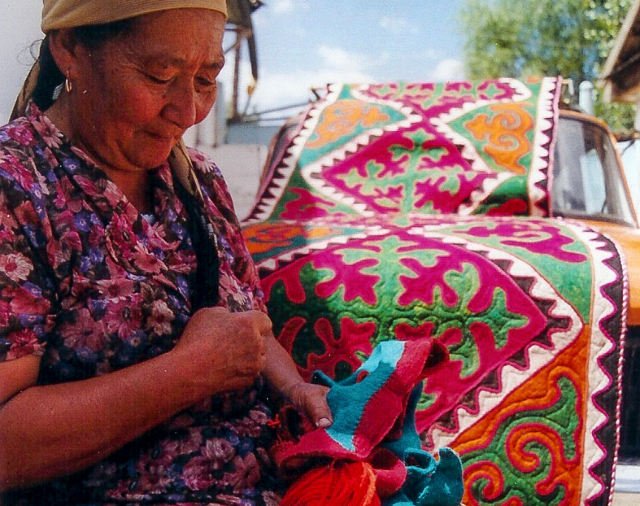Text
Karin Altmann regards textiles not only as pieces of fabric that are made of fibres, but as documents that provide an insight into the lives of the people that produce and use them. Textiles tell stories about humans past and present, about their cosmology, worldview, culture, and society, but also about their aspirations, dreams and visions. They allow the past to reach out to us, and help us to gain a deeper understanding of the complexity and interconnectedness of our world. In order to make these connections visible and to trace stories in textiles, Karin Altmann takes us in her keynote on a journey to Central Asia and invites us to take a closer look on Kyrgyz patterns and ornaments that have arisen on the basis of processes of abstraction and coding. Considering the nomadic animal-style art of the early iron age - a pattern and ornamental art with naturalistic motifs based on animals – as an important reference point for Kyrgyz ornamentation, she will also shed light on this zoomorphic style of art, which ranged locally from the Altai Mountains across the entire Eurasian Steppe to the Danube Basin, and was not ethnically bound, but an art that spread the worldview of the horse-riding nomads over thousands of kilometres. Kyrgyz patterns still hold encoded information, protective features as well as visualisations of blessings and wishes in addition to their decorative function. As objects of tangible culture, Kyrgyz felt carpets reflect people’s relationship with nature and all aspects of their environment. The tradition of felting can be seen as a process of life and self-reflection, in which handed down patterns and ornaments are intertwined with the thoughts, wishes and aspirations of the felting women, creating images and stories through which the invisible becomes visible.
Titel der Veranstaltung
20th ETN conference „Codes - stories in textiles“

